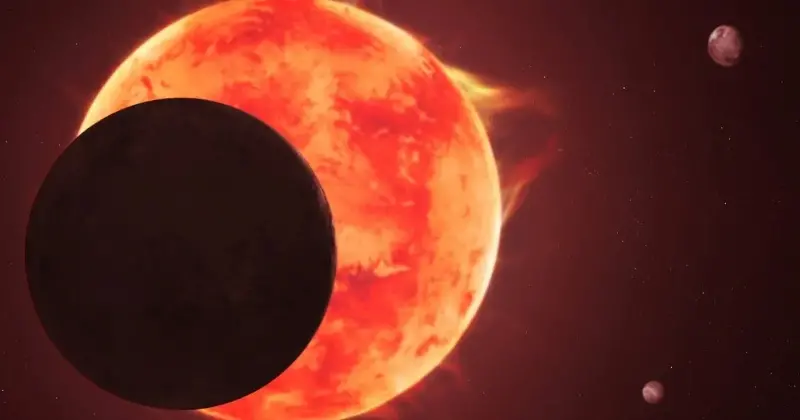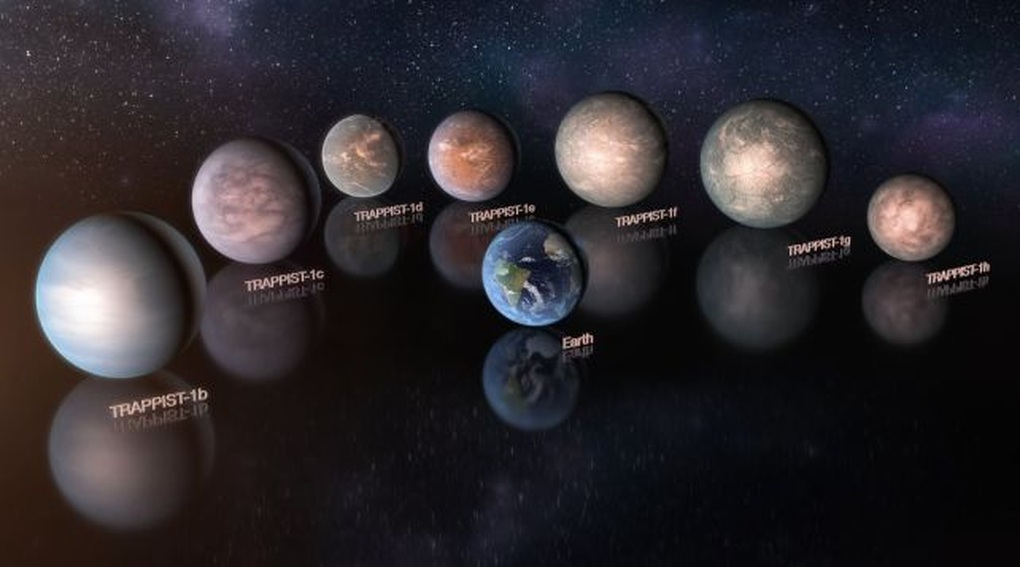
A newly published study shows that an Earth-sized planet 40 light years away may have an atmosphere, thanks to data from modern telescopes.

One of the worlds in the TRAPPIST-1 system, 40 light-years from Earth, is showing promising signs of an atmosphere capable of supporting life.
According to Sciencealert , the exoplanet TRAPPIST-1e, which is about the same size as Earth, may possess a gaseous envelope similar to our planet, creating conditions for liquid water to exist on the surface.
These findings were made using the James Webb Space Telescope (JWST), a state-of-the-art instrument capable of analyzing light passing through planetary atmospheres to determine chemical composition.
As light from the host star passes through the atmosphere, atoms and molecules absorb and re-emit certain wavelengths, allowing scientists to identify the type of gas present.
“TRAPPIST-1e remains one of the most intriguing habitable planets, and these new results bring us closer to knowing what kind of world it is,” said astronomer Sara Seager of the Massachusetts Institute of Technology (MIT).
Data from JWST suggest that TRAPPIST-1e is unlikely to have a carbon dioxide-rich atmosphere like Venus or Mars, nor does it fit the model of containing hydrogen and methane.
Instead, the observed spectrum suggests the presence of a layer of gas rich in molecular nitrogen, accompanied by small amounts of carbon dioxide and methane. This is especially important because a nitrogen-rich atmosphere is characteristic of Earth (it makes up about 78%).
If this hypothesis is confirmed, TRAPPIST-1e could become the most Earth-like exoplanet ever discovered.
Prime location in a livable area
TRAPPIST-1e is part of the TRAPPIST-1 system, announced in 2016. It is a red dwarf star that hosts at least seven rocky planets, as opposed to the gas giants or icy planets typically found around it. Some of these planets are located in the “habitable zone,” the area at which water can exist in liquid form.
Among them, TRAPPIST-1e is considered the most potential candidate. This planet is located at an ideal distance from its host star, not too close to be hot, but not too far away to be frozen. Scientists believe that this condition provides a high chance of maintaining liquid water, the fundamental element for biochemical processes.
However, for water to exist on its surface, a planet needs not only the right temperature but also a stable atmosphere to prevent the water from evaporating or sublimating. This is why the discovery of the possibility of an atmosphere on TRAPPIST-1e is considered an important step forward.
Although the initial observations are promising, scientists still emphasize that the study cannot yet draw final conclusions.
“The most exciting possibility is that TRAPPIST-1e may have a so-called secondary atmosphere containing heavy gases such as nitrogen,” said astrophysicist Ryan MacDonald (University of St Andrews, UK). “But our initial observations cannot yet rule out the possibility that this is just a bare rocky planet with no atmosphere.”
